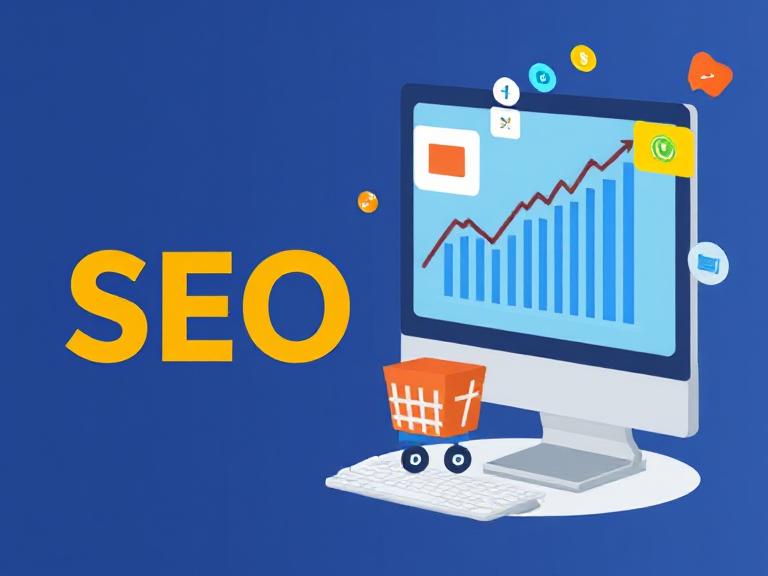Introduction
For e-commerce businesses, visibility is everything. If your ideal customers can’t find you when they search for products, you’re losing sales—plain and simple. This is where SEO for e-commerce becomes mission-critical. It’s more than just getting traffic; it’s about attracting the right visitors at the right stage of their buying journey.
In this article, we’ll walk through the most effective SEO strategies to increase organic traffic for e-commerce websites—based on proven experience, data, and real-world implementation.
Why SEO Is Essential for E-Commerce Success
E-commerce SEO is about optimizing your online store to rank higher in search engines like Google, Bing, and even YouTube. Unlike paid ads, organic SEO continues to drive traffic long after the initial investment.
Benefits of e-commerce SEO include:
- Higher visibility in search engine results pages (SERPs)
- Increased organic traffic with high buyer intent
- Lower customer acquisition cost compared to paid ads
- Long-term brand authority and trust
If your site isn’t optimized, you’re missing out on a huge portion of potential customers—and leaving revenue on the table.
Key SEO Challenges for E-Commerce Sites
E-commerce platforms bring unique challenges that standard websites don’t face, such as:
- Duplicate content from product pages, filters, and categories
- Thin content on category or product pages
- Crawl and indexing issues with thousands of URLs
- Slow load times, especially on mobile
- Weak internal linking structure
Understanding these problems is the first step toward resolving them and increasing your visibility.
Step-by-Step SEO Strategy for E-Commerce Sites
1. Conduct In-Depth Keyword Research
Before you start optimizing, you need to understand what your customers are searching for.
- Use tools like Google Keyword Planner, Ahrefs, or SEMrush.
- Target long-tail keywords (e.g., “organic cotton baby clothes”).
- Group keywords by search intent: informational, navigational, transactional.
A buyer searching “best running shoes under $100” is closer to purchasing than someone just searching “running shoes.” Match your content to the stage of the buyer’s journey.
2. Optimize Product Pages for Conversions and Rankings
Your product pages are your digital shelves. Make them count.
- Include your primary keyword in the title tag, meta description, H1, and image alt text.
- Write unique product descriptions—don’t copy manufacturer content.
- Add product schema markup for rich snippets (price, availability, reviews).
- Use high-quality images and include video demos when possible.
- Add FAQs below product listings to answer buyer questions and target additional keywords.
3. Improve Your Category Pages
Category pages often attract more traffic than individual products, especially for broad search terms.
- Write 300–500 words of unique content explaining what the category is, who it’s for, and how to choose products.
- Include internal links to top products, related categories, and blog content.
- Use SEO-friendly URLs (e.g.,
/running-shoes/men/instead of/cat123?id=445).
This also improves site navigation and helps search engines understand the structure of your store.
4. Fix Technical SEO Issues
Technical health is the backbone of SEO. Search engines need to crawl and index your site efficiently.
- Set up Google Search Console and submit an XML sitemap.
- Ensure your site is mobile-friendly with fast load speeds.
- Use canonical tags to prevent duplicate content issues.
- Eliminate broken links and redirect chains.
- Optimize pagination and faceted navigation (filters).
A well-optimized technical structure ensures Google understands which pages to rank—and which to ignore.
5. Leverage Content Marketing to Build Authority
Search engines reward sites that offer value beyond their product listings. Creating content helps you attract traffic at the top of the funnel.
- Start a blog that answers questions your audience is searching.
- Create buying guides, product comparisons, tutorials, and FAQs.
- Use pillar and cluster content models to improve topical relevance.
For example, an online electronics store could publish a guide titled “How to Choose the Right Noise-Canceling Headphones,” and link to specific products within.
Quality content not only boosts SEO—it also builds trust with potential buyers.
6. Strengthen Internal Linking and Site Architecture
A well-planned internal linking structure helps distribute authority across your site.
- Link from your blog to relevant product and category pages.
- Use breadcrumb navigation for easy user experience.
- Highlight “related products” or “customers also bought” links on product pages.
Strong internal linking improves crawling, user retention, and ultimately, conversion rates.
7. Focus on Link Building the Right Way
Backlinks remain a top-ranking factor. For e-commerce, your strategy should be about quality—not just quantity.
- Reach out to bloggers and influencers in your niche.
- Get listed in relevant directories and local business profiles.
- Partner with affiliates and encourage product reviews.
- Consider guest posting on reputable industry sites.
Link building should feel organic and authentic. Stay clear of black-hat practices that might lead to penalties.
8. Local SEO for E-Commerce with Physical Locations
If you operate both online and offline, local SEO becomes a game-changer.
- Optimize your Google Business Profile with accurate name, address, and phone number.
- Use local schema markup on your location pages.
- Encourage and respond to reviews.
- Create location-based landing pages targeting city-specific keywords.
For instance, e-commerce brands operating out of North Carolina can benefit greatly by integrating digital marketing Charlotte strategies to capture a localized customer base.
Keep Evolving with Search Trends
E-commerce SEO is never finished. Search trends evolve, consumer behavior changes, and new competitors emerge. Regular audits and updates are key to staying ahead.
Working with a knowledgeable team in digital marketing can streamline this process, helping your online store stay agile and ahead of the curve.
Final Thoughts
Increasing organic traffic for your e-commerce store is not just about ranking higher—it’s about becoming a go-to source for your audience. By combining technical SEO, content strategy, and continuous optimization, you can position your store to attract the right traffic—and convert it.
The key is consistency. SEO isn’t a one-time task—it’s a long-term investment. But when done right, it delivers lasting results that grow your business 24/7.







